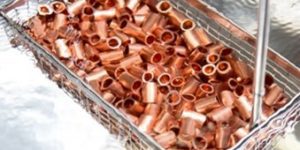New AM Milestone for Bionic Aircraft Research
Parts can now be printed directly from the CATIA V5 CAD system with no need to leave the development environment using an interface from Cenit.
Posted: April 18, 2019
Since 2016 the objective of the “Bionic Aircraft” research project funded by the European Commission (grant number 690689) has been to reduce emissions in the aviation industry. Ten international consortium partners from industry, research and development, including Cenit AG (Stuttgart, Germany), are collaborating to develop new methods and concepts where 3D print and bionic design play an important role in reducing the weight of aircraft components and, in turn, reducing fuel consumption. As part of this research, Cenit recently reached another milestone for additive manufacturing: For the first time ever, components can be printed directly from the CATIA V5 CAD system with no need to leave the development environment, all made possible with an interface developed by Cenit AG.
All process steps, including post-processing, can be mapped in CATIA V5. Now, exact data is available in CATIA V5 for removing the support structures during 3D part post-processing – elaborate reconstructions of the model and the support structures are a thing of the past. Future users can reduce their time and costs through a closed process chain for additive manufacturing, because now the development process for a part until series maturity has become significantly leaner.
“Support structures of additive manufactured components should not be removed manually in series production, but instead with NC machines,” explains Jochen Michael, a senior consultant at Cenit. “When creating NC programs of this type, the STL format – which in the past was used primarily for the representation of component and support structures in the 3D print data chain – is inadequate, because it can only represent the geometry imprecisely. In that case, the model and support structures must be reconstructed for refinishing, resulting in unnecessary expense. We can prevent this with a 3D print directly from CATIA V5 because the exact geometry data for this post-processing is already available.”
In order for the 3D print to be successful via CATIA V5, Cenit provides support to the engineer in the preparation of data from topology optimization, a computer-aided process in which the material for the component is reduced to the amount that is absolutely necessary to meet the requirements. The newly developed CATIA V5 Slicer from Cenit slices the component into layers. The contours of these slices are sent directly to the 3D printer via the post-processor developed by Cenit.














